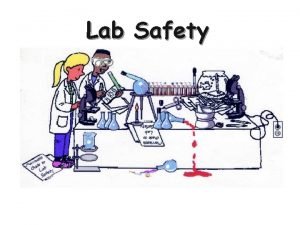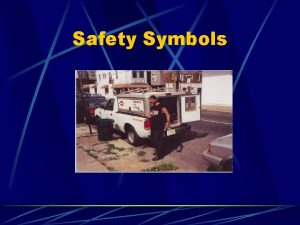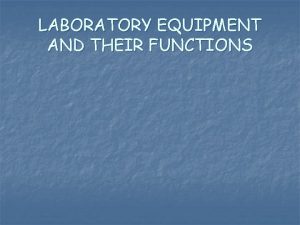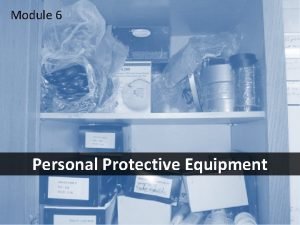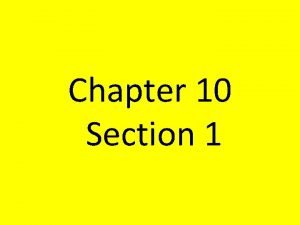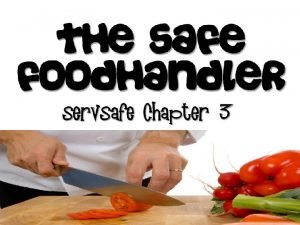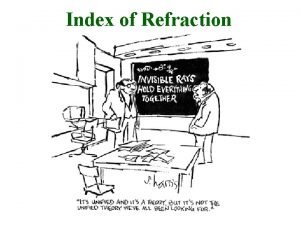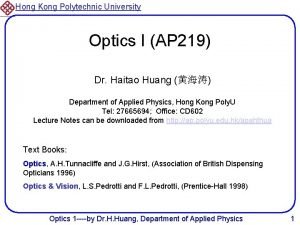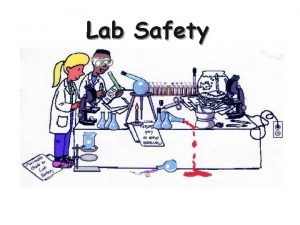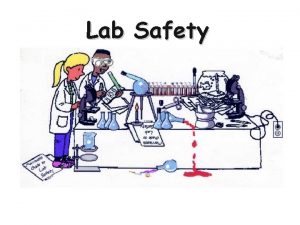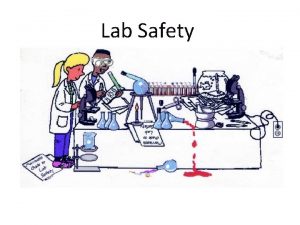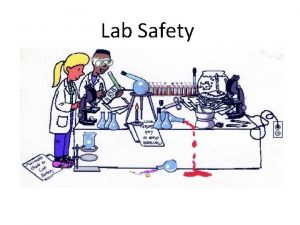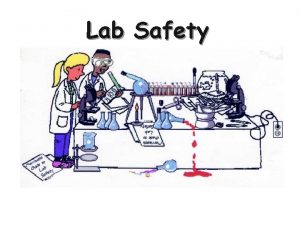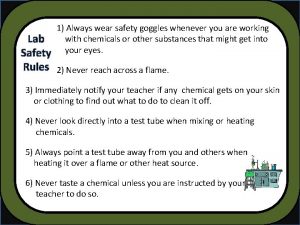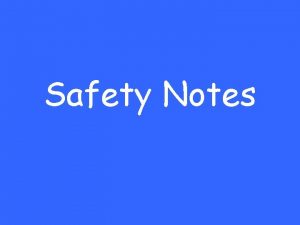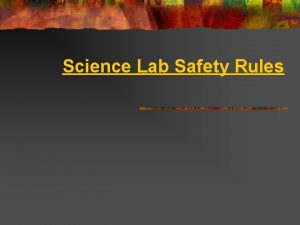Food Science Student Safety Requirements Must wear goggles













- Slides: 13

Food Science

Student Safety Requirements • Must wear goggles • Must wear an apron or lab coat • Gloves for ice cream lab only • Must have skin covered from neck down to wrist and toes • Long hair shoulder length or longer must be tied back • Students who unsafely remove their safety clothing/goggles or are observed handling any material or equipment in an unsafe manner WILL BE DISQUALIFIED FROM THIS EVENT!!

Student Team • Each team must bring safety equipment • A writing implement • A calculator • The following materials to prepare ice cream, perform protein/fat analysis, and/or curd analysis: • 5 pages (both sides) containing information in any form from any source (sheet protectors ARE permitted) • Plastic bags Paper towels • Cups Gloves (Type may be competitor’s choice) • Spoons Towel • Graduated cylinders ( class A are best) • 500 -600 m. L plastic container with lids • Cheesecloth • Beakers • p. H paper

Supervisors • Will provide milk products (any type of milk may be provided including powdered) • Salts • Lemon juice • Vinegar • Ice (if necessary) • Thermometers • Other reagents or equipment to complete experimental activities • Milk provided will be 125 -150 m. L depending on which lab is used & the amount WILL BE THE SAME FOR EACH STUDENT

Notebook • Teams must perform 3 or more experiments for each of the three Lab Tasks • Lab tasks are: • Ice Cream Formation • Determination of Curd Mass • Determination of Milk Fat Mass from Cream • Experiments must be recorded on the Food Science Experiment Form and must be placed together in the notebook (Students should be encouraged to do more than 9 experiments but ONLY THE FIRST 3 FOR EACH TASK WILL BE GRADED!) • An experiment constitutes one entry in the notebook & each experiment must have only ONE INDEPENDENT VARIABLE! • The notebook will be impounded prior to the start of the tournament for grading • http: //www. soinc. org


Lab Task #1 Ice Cream Formation • Students will prepare ice cream based on materials provided • Students will form ice cream on a surface to obtain a height measurement by the Event Supervisor • Teams may use any amount of the provided ingredients • Ice cream formation must self-stand for 5 seconds before the measurement is taken • Students may hand shape the ice cream

Refer to Food Science Chart Tye of Milk Amount Provided 125 130 Whole 135 140 145 150 125 130 2% 135 140 145 150 Ice (mg or m. L) Salt (mg or m. L)

Lab Task #2 Determine Curd Mass • Students will prepare curds based on materials provided • Students will determine the mass of curd formation which will be compared to the Event Supervisor’s mass of curd formation (using the same materials and similar procedures)

Lab Task #3 Milk Fat Determination from Cream • Students will prepare butter based on materials provided • Students will determine the mass of butter formation which will be compared to the Event Supervisor’s mass of butter formation using the same materials and similar procedures

The Test • Teams will take a written exam covering the following : • ONLY dairy and food science topics. These can be : • • • The role of lipids Carbohydrates & proteins typically found in dairy foods Standard labeling regulations Basic organic reactions such as esterification, fat bonding Saturated & unsaturated fats Chemical structure of sugars, starches, fats, & proteins Essential fats, vitamins, & proteins How cooking changes dairy foods chemically Allergens in dairy foods Dairy food preservation RDA (Recommended Daily Allowance) of essential minerals & vitamins in dairy foods & the consequences of NOT having them

The Test Cont’d • • • Freezing Point Depression Non-dairy ‘milk’ products Lactose free milk Health benefits of dairy foods Low fat & fat free milk Lactose intolerance Emulsification Pasteurization Organic dairy products Casein & whey proteins Probiotics

Scoring • High score wins • Notebook score = 2 points / experiment (9 exp’s) 18 points max • Lab task score = • 1 – ice cream score = 0. 1 pt for each mm of height (rounded) • Ex. – team gets 125 mm for height so, 125 mm x 0. 1 = 12. 5 pts. • 2 – Curd mass & Milk Fat Mass scores = [(Team mass)/(Supervisor Mass)]x 10 • Ex. – team gets 2. 4 g & supervisor gets 2. 5 g = (2. 4/2. 5)x 10 = 0. 96 x 10 = 9. 6 pts. • Test Score % = (% correct)/2 so here 50 points max • Penalties up to 10% of total possible score for cleanup as instructed • Tie Breaker = preselected test questions
 You must wear your safety goggles at all times
You must wear your safety goggles at all times Safety goggles symbol
Safety goggles symbol Beaker tongs function
Beaker tongs function Enha safety goggles
Enha safety goggles Ppe body protection
Ppe body protection A worker mixing chemicals must not wear
A worker mixing chemicals must not wear Suppose you live in a society that has a barter economy
Suppose you live in a society that has a barter economy What is food safety
What is food safety What is her favourite subject?
What is her favourite subject? Unit 2 food food food
Unit 2 food food food Sequence of food chain
Sequence of food chain After which activity must food handlers wash their hands?
After which activity must food handlers wash their hands? A swimmer has dropped her goggles
A swimmer has dropped her goggles A swimmer has dropped her goggles
A swimmer has dropped her goggles
